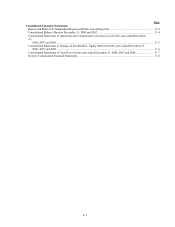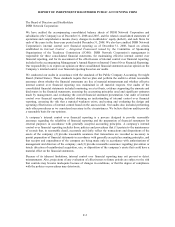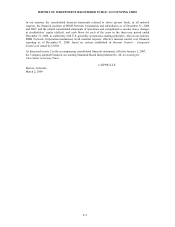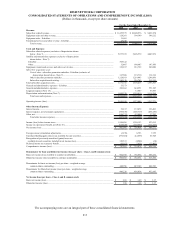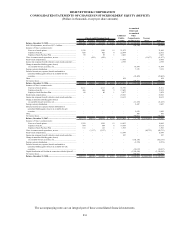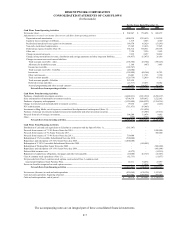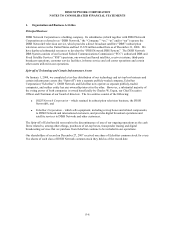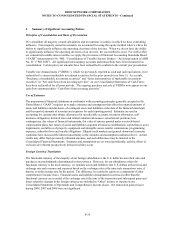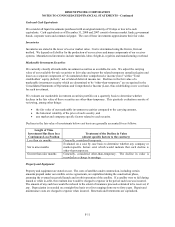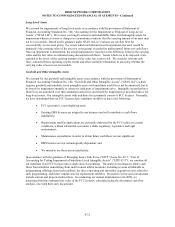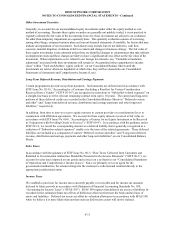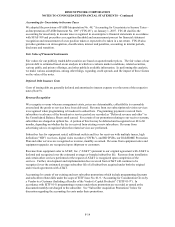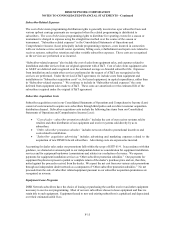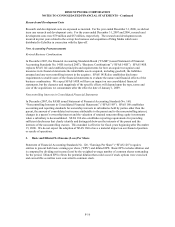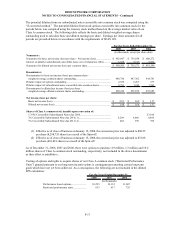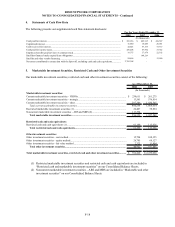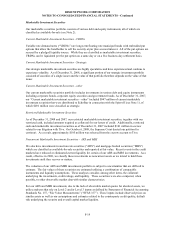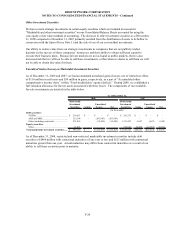Dish Network 2008 Annual Report Download - page 92
Download and view the complete annual report
Please find page 92 of the 2008 Dish Network annual report below. You can navigate through the pages in the report by either clicking on the pages listed below, or by using the keyword search tool below to find specific information within the annual report.DISH NETWORK CORPORATION
NOTES TO CONSOLIDATED FINANCIAL STATEMENTS - Continued
F-10
2. Summary of Significant Accounting Policies
Principles of Consolidation and Basis of Presentation
We consolidate all majority owned subsidiaries and investments in entities in which we have controlling
influence. Non-majority owned investments are accounted for using the equity method when we have the
ability to significantly influence the operating decisions of the investee. When we do not have the ability
to significantly influence the operating decisions of an investee, the cost method is used. For entities that
are considered variable interest entities we apply the provisions of Financial Accounting Standards Board
(“FASB”) Interpretation No. 46R, “Consolidation of Variable Interest Entities – An Interpretation of ARB
No. 51” (“FIN 46R”). All significant intercompany accounts and transactions have been eliminated in
consolidation. Certain prior year amounts have been reclassified to conform to the current year presentation.
Variable rate demand notes (“VRDNs”), which we previously reported as cash and cash equivalents, were
reclassified to current marketable investment securities for the prior periods (see Note 5). As a result,
“Purchases of marketable investment securities” and “Sales and maturities of marketable investment
securities” in “Net cash flows from investing activities” on our Consolidated Statements of Cash Flows
have been reclassified for all prior periods. The ongoing purchase and sale of VRDNs now appear on our
cash flow statement under “Cash flows from investing activities.”
Use of Estimates
The preparation of financial statements in conformity with accounting principles generally accepted in the
United States (“GAAP”) requires us to make estimates and assumptions that affect the reported amounts of
assets and liabilities and disclosure of contingent assets and liabilities at the date of the financial statements
and the reported amounts of revenues and expenses for each reporting period. Estimates are used in
accounting for, among other things, allowances for uncollectible accounts, inventory allowances, self-
insurance obligations, deferred taxes and related valuation allowances, uncertain tax positions, loss
contingencies, fair values of financial instruments, fair value of options granted under our stock-based
compensation plans, fair values of assets and liabilities acquired in business combinations, capital leases, asset
impairments, useful lives of property, equipment and intangible assets, retailer commissions, programming
expenses, subscriber lives and royalty obligations. Illiquid credit markets and general downward economic
conditions have increased the inherent uncertainty in the estimates and assumptions indicated above. Actual
results may differ from previously estimated amounts, and such differences may be material to the
Consolidated Financial Statements. Estimates and assumptions are reviewed periodically, and the effects of
revisions are reflected prospectively in the period they occur.
Foreign Currency Translation
The functional currency of the majority of our foreign subsidiaries is the U.S. dollar because their sales and
purchases are predominantly denominated in that currency. However, for our subsidiaries where the
functional currency is the local currency, we translate assets and liabilities into U.S. dollars at the period-end
exchange rate and revenues and expenses based on the exchange rates at the time such transactions arise, if
known, or at the average rate for the period. The difference is recorded to equity as a component of other
comprehensive income (loss). Financial assets and liabilities denominated in currencies other than the
functional currency are recorded at the exchange rate at the time of the transaction and subsequent gains and
losses related to changes in the foreign currency are included in “Other” income or expense in our
Consolidated Statements of Operations and Comprehensive Income (Loss). Net transaction gains (losses)
during 2008, 2007 and 2006 were not significant.



